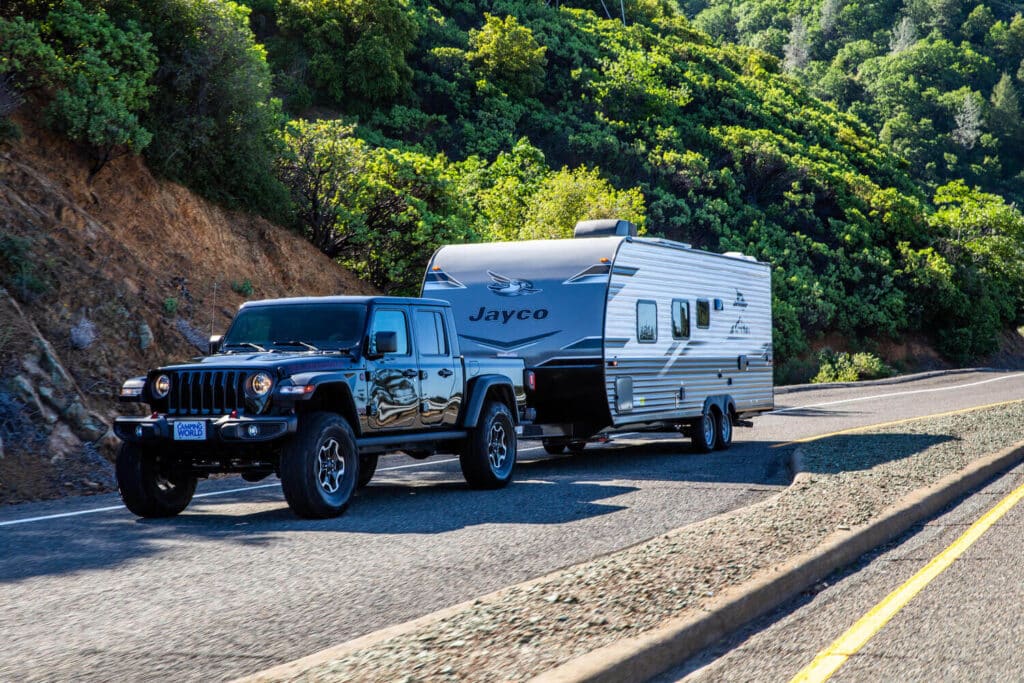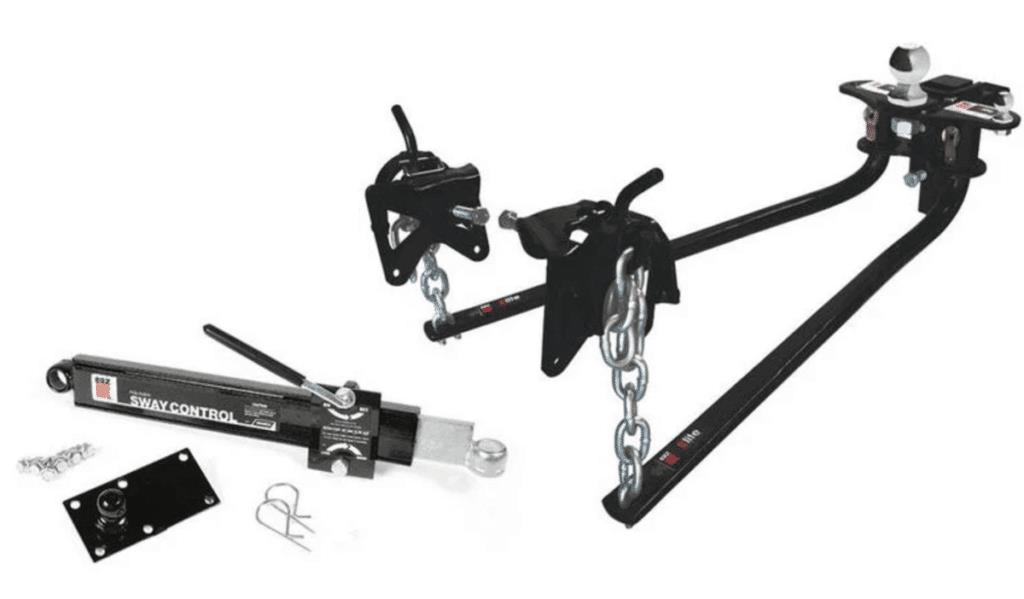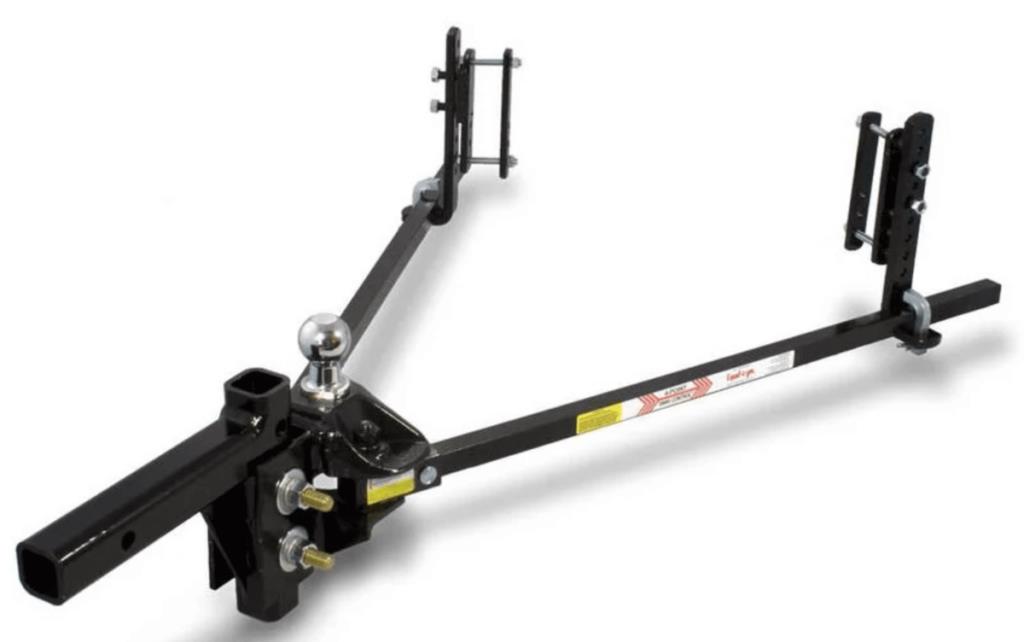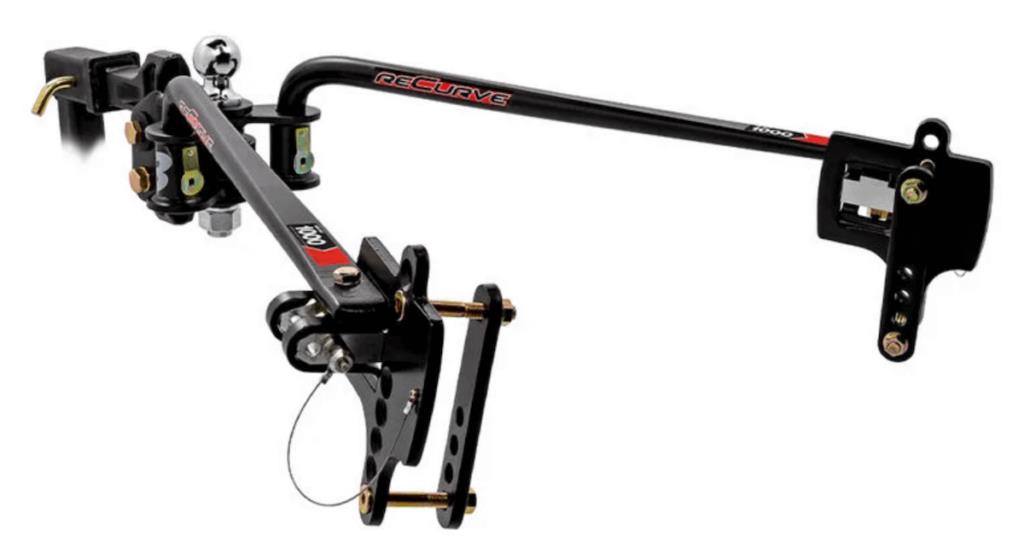A weight distribution hitch with sway control is a must-have tow accessory for towable RVs exceeding 50% of the tow vehicle’s curb weight. While the National Transportation Safety Board (NTSB) currently doesn’t publish a requirement for weight distribution hitches, manufacturers are very specific and utilize the FALR method as the point of qualification.
FALR stands for Front Axle Load Restoration.
This method is intended to return 50-100% of the weight lost on the front axle due to hitch weight back to the front axle. This is important because 70% of the braking and all of the steering happen at the front axle. If the weight has been moved rearward, you will severely compromise both.
How Much FALR Correction Do You Need?
The hitch brand and style you choose is up to you and your installing dealership, but it must allow you to provide the amount of FALR correction stated in your tow vehicle’s owner’s manual. Here are the recommended corrections for some of the most common tow vehicles:
- Ford F150 = 50% FALR over 5,000 pounds
- Chevrolet 1500 = 50% FALR over 7,000 pounds
- Nissan Titan = no FALR, but a weight distribution hitch is required over 5,000 pounds
- Ram 1500 = 66% FALR over 5,000 pounds
- Toyota Tundra = 100% FALR over 5,000 pounds
Retaining control of your tow vehicle and towable RV is the primary reason to invest in a weight distribution hitch with sway control. But what is the difference between weight distribution and sway control? Let’s begin with a brief overview of RV towing basics.
Understanding the Basics of RV Towing

Photo by Camping World
It’s important to preface a look at weight distribution and sway control systems with the basics. Before you purchase, have a professional install, and use a weight distribution hitch, you should:
- Understand RV weight ratings. Watch this tutorial to understand the difference between dry weight, tongue weight, and other key terms.
- Read all hitch and tow recommendations in your owner’s manual.
- Load your trailer properly. Read our guide to learn how to distribute weight evenly in your camper.
- Acquire the proper RV tools. Utilize our comprehensive list of RV tools and maintenance supplies to add the essentials to your setup.
What is Sway Control for Towing?
Sway refers to the side-to-side movement of your trailer when towing. At high speeds, trailer sway becomes incredibly dangerous. In the worst cases, a swaying trailer can tip over, damaging the trailer, its contents, and potentially overturning the tow vehicle and injuring passengers.
Sway can be caused by the road surface, speed of travel, wind, tire pressures, trailer tongue weight, the number of axles, and improper loading. While factors like your speed and proper loading are under your control and should be managed properly, a hitch with sway control greatly increases your safety on the road too.
A sway control hitch adds friction to the hitch connection, reducing sway while allowing easy turning. This helps to deliver a smoother driving experience and improved handling when turning and braking.
What is Weight Distribution for Towing?
Weight distribution spreads the weight of a trailer more evenly across your tow vehicle’s axles. Without it, the entire weight is “loaded” onto your vehicle’s rear axle, usually resulting in a low point at the connection of your vehicle’s hitch ball and the trailer hitch (as illustrated below).

When all the weight is loaded onto the rear axle, the nose of your tow vehicle tends to lift. This reduces your fuel economy and can also reduce your ability to control the vehicle when braking. That low point at the connection of vehicle and trailer is also more likely to bottom out and scrape the ground when entering parking lots, gas stations, and other areas with steep entries.
Weight distribution hitches use spring bars running from mounting locations near the hitch ball back to brackets mounted on the A-frame of your trailer. Most systems allow you to adjust the distance from the bar to the frame of your trailer while adjusting the hitch.
Once connected, those bars serve as levers that deliver upward force on your tow vehicle’s rear axle, lifting it and returning some or all of the lost weight to the front axle. Simultaneously, these levers deliver downward force on your trailer’s axle, effectively raising the trailer’s tongue.
With a weight distribution hitch, your vehicle and trailer will ride more level, providing more braking control, improving fuel economy, and increasing safety for components like your tongue jack.
Do Chains Work as Spring Bars?
Chains are not a viable substitute for spring bars for a weight distribution hitch. Because the spring bar is the lever, it must be rigid and strong enough to deliver the downward force needed for effective weight distribution.
One exception to this general rule is this Andersen hitch. Unlike spring bar models, the Andersen requires you to tighten the chains under the hitch and A-frame every time the RV is hitched up. This tension on the underside of the assembly forces the load upwards. Sway control is provided by the friction pivot plate that the chains mount to.
It is an effective hitch that is lighter and more compact when stored than spring bar models. But it requires a level of effort and skill that not everyone will prefer. Some small RVs that cannot accept spring bar style hitches can benefit tremendously from an Andersen hitch. Examples would be folding camper trailers, teardrops, and the Airstream Basecamp.
While larger trucks require no special hitches to handle these RVs under 3,500 pounds, station wagons, SUVs, and small pickups may need a weight distribution hitch to pull them safely, and the Andersen may be the only one the RV can handle.
Sway Control versus Weight Distribution: What’s the Difference?

Photo by Camping World
Here’s the main difference:
Weight distribution spreads your trailer’s tongue weight across both axles of your tow vehicle. Sway control reduces swaying and bouncing when towing at high speeds.
Both help deliver safer, more efficient towing. Fortunately for practical purposes, many weight distribution hitches deliver weight distribution and sway control, allowing you to purchase and install a single system to take advantage of both. Some treat them separately and require the purchase of additional components for sway control.
The Best Weight Distribution Hitches with Sway Control from Camping World
Here are three of our top-selling options for a weight distribution hitch with sway control:
Technician Tip: We highly recommend contacting our Installation Department to have your weight distribution hitch installed by a trained RV technician. This component enables safe towing, making a proper installation imperative to your safety and the safety of your towable and tow vehicle.
Camco Eaz-Lift Elite

Photo by Camping World
Camco’s weight distribution hitch has many pre-installed components, saving you time and hassle. The U-bolts and chains are pre-connected to the spring bars, and the hitch comes with all required mounting hardware. The hitch and sway control balls are torqued to the manufacturer’s specifications on the adjustable ball mount when you unbox this hitch.
Hitch Specs
- Max Tongue Weight: 1,000 pounds
- Max Gross Weight: 10,000 pounds
- Hitch Ball Size: 2-5/16”
Learn more about this weight distribution hitch with sway control.
Equal-i-zer 10K Weight Distribution Hitch with Sway Control

Photo by Camping World
This weight distribution hitch is made with American steel and offers four-point sway control that delivers safe, comfortable towing. It’s a complete package, eliminating the extra installation and hassle that comes with hitches that require an add-on sway control device. While it doesn’t come with a hitch ball, the included shank fits 2” hitch receivers and offers a 3” drop and a 7” rise to allow for easy adjustments.
Hitch Specs
- Max Tongue Weight: 1,000 pounds
- Max Gross Weight: 10,000 pounds
- Hitch Ball Size: 2-5/16” (not included)
Check the price at Camping World.
Camco Eaz-Lift Recurve R3

Photo by Camping World
The Recurve R3 features a unique design with top-loading spring bars that deliver more ground clearance than other weight distribution hitches. This makes it an excellent option for trailers designed for off-grid camping. The adjustable sway control allows you to control how much sway control is exerted on the trailer, and the mounting brackets are designed to fit 3” to 6” A-frame trailers.
Hitch Specs
- Max Tongue Weight: 1,000 pounds
- Max Gross Weight: 10,000 pounds
- Hitch Ball Size: 2-5/16”
Find pricing information and availability online.
These are the important basics of weight distribution and sway control. Learn how to hook up and adjust your weight distribution hitch in these tutorials:
- How to Hook Up a Weight Distribution Hitch
- How to Adjust a Weight Distribution Hitch
What questions do you have about weight distribution and sway control? Let us know in the comments below.
The post Sway Control vs. Weight Distribution: What’s the Difference? appeared first on Camping World Blog.
By: Tucker Ballister
Title: Sway Control vs. Weight Distribution: What’s the Difference?
Sourced From: blog.campingworld.com/learn-to-rv/sway-control-vs-weight-distribution/
Published Date: Fri, 13 Oct 2023 08:00:00 +0000
---------------------------------------------
 CampingSurvivalistHuntingFishingExploringHikingPrivacy PolicyTerms And Conditions
CampingSurvivalistHuntingFishingExploringHikingPrivacy PolicyTerms And Conditions
